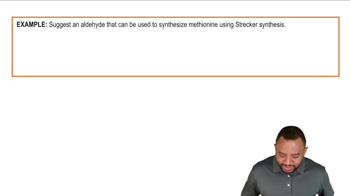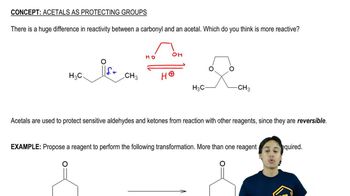Show how a protecting group might be used to make these reactions successful.
(a)

 Verified step by step guidance
Verified step by step guidance Verified video answer for a similar problem:
Verified video answer for a similar problem:



 7:16m
7:16mMaster Mechanism of Silyl Ether Protecting Groups. with a bite sized video explanation from Johnny
Start learning